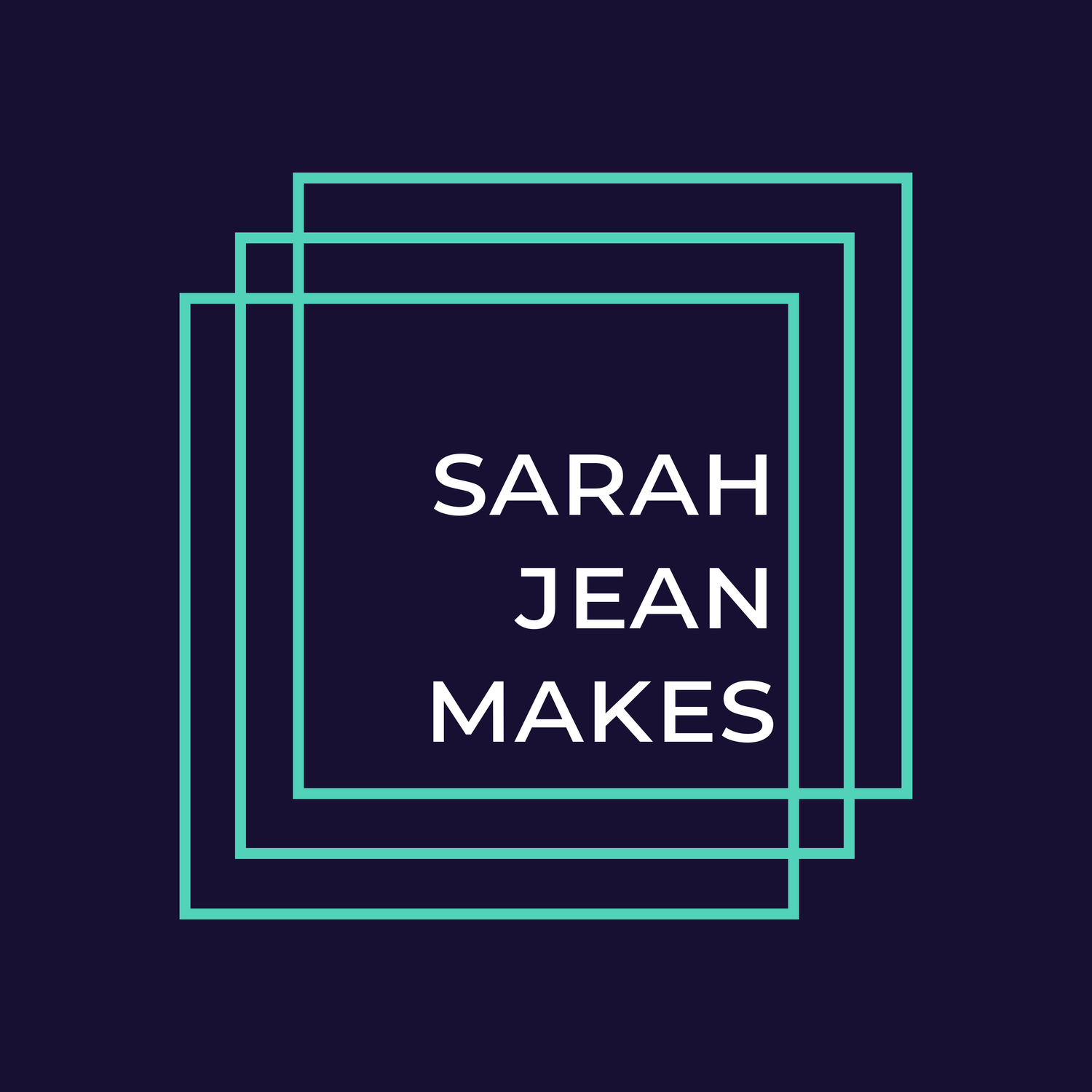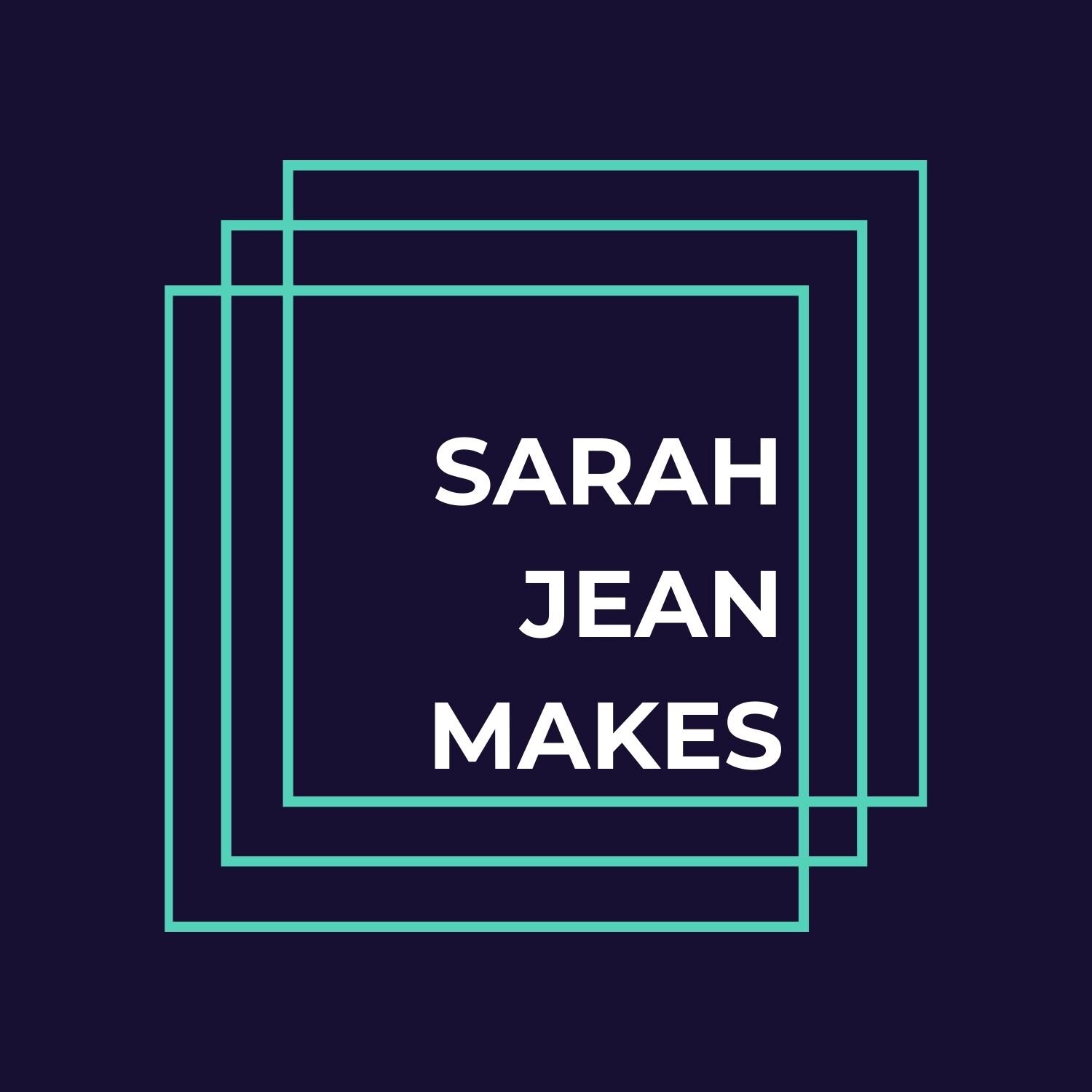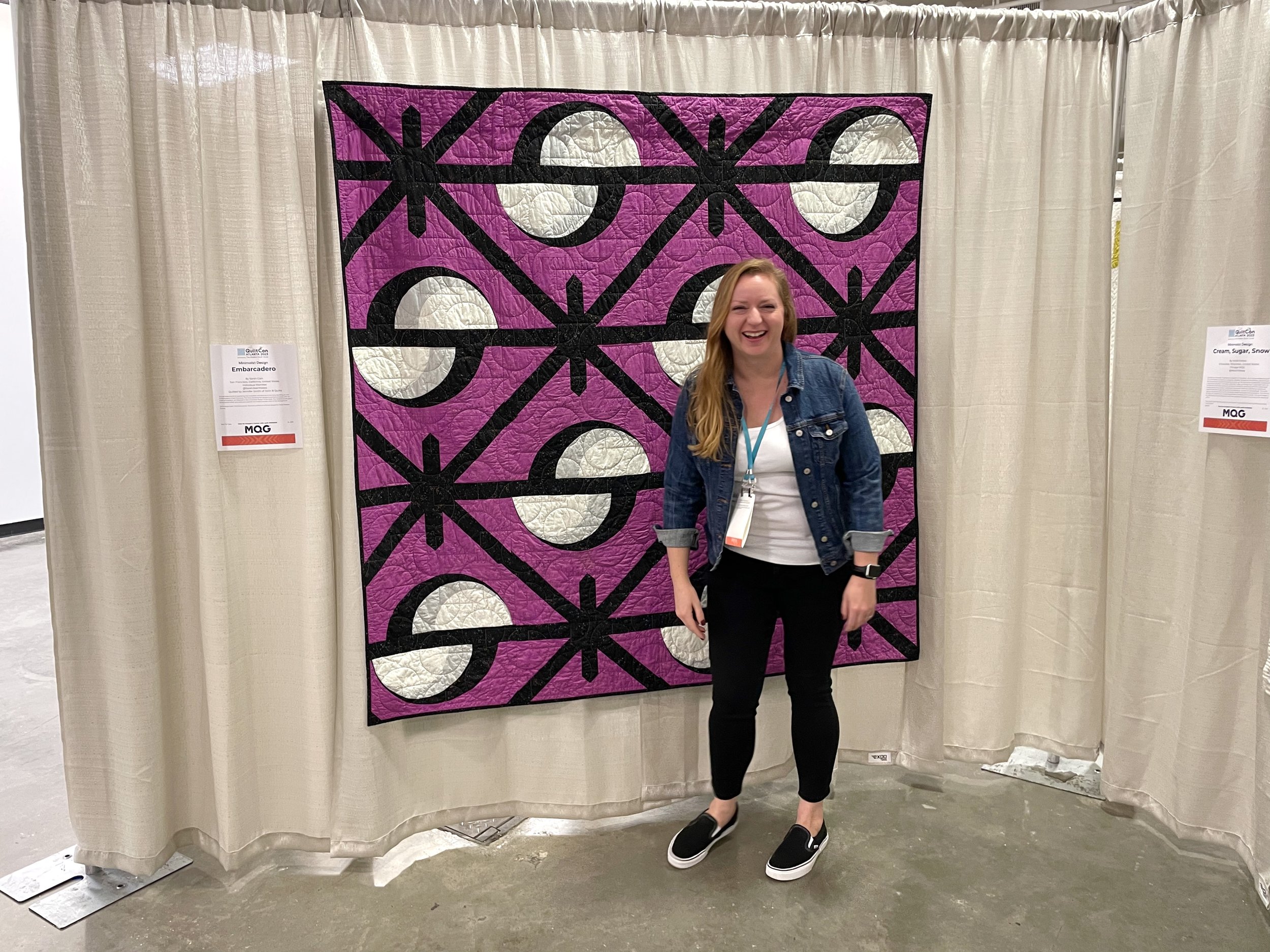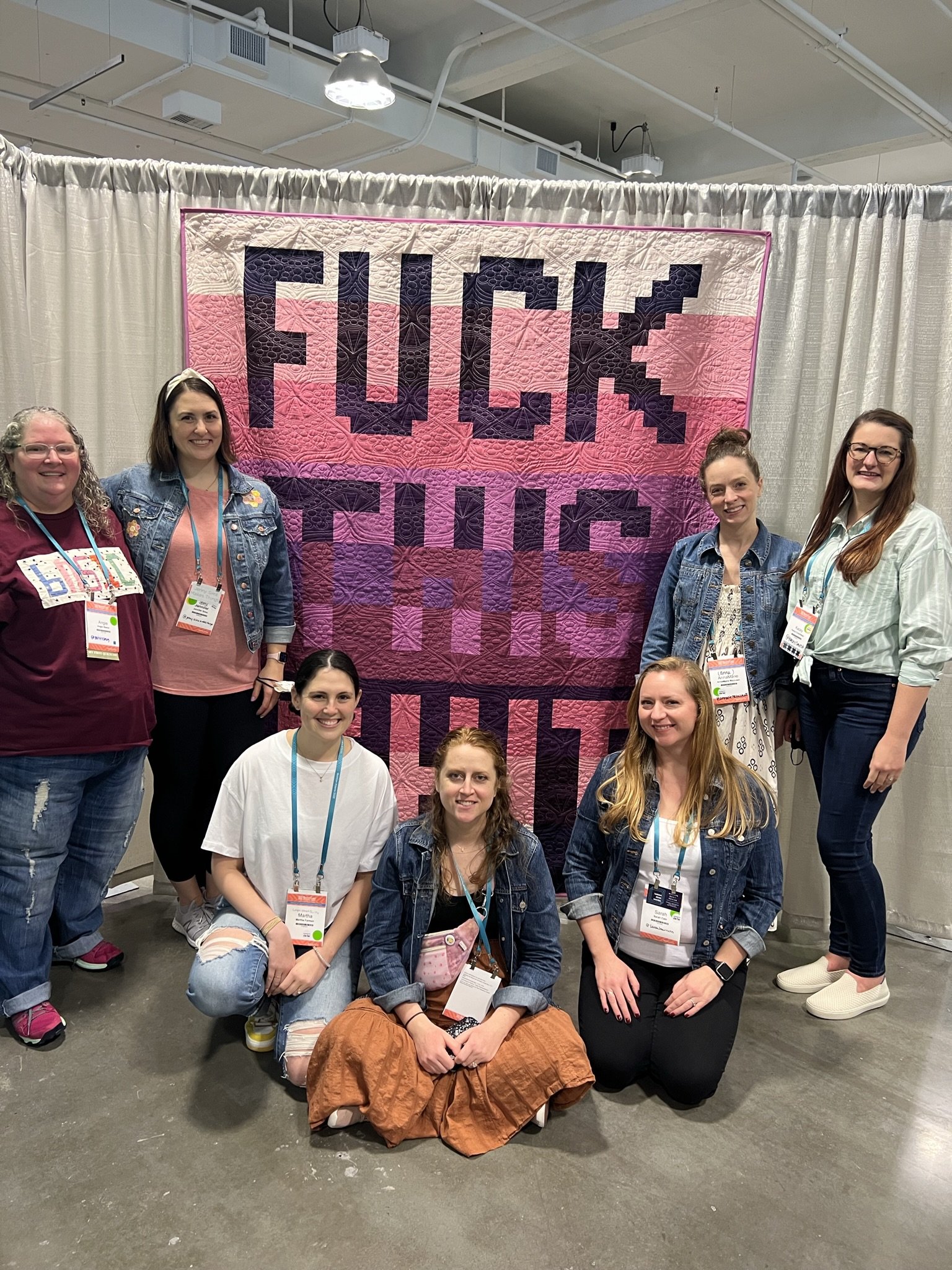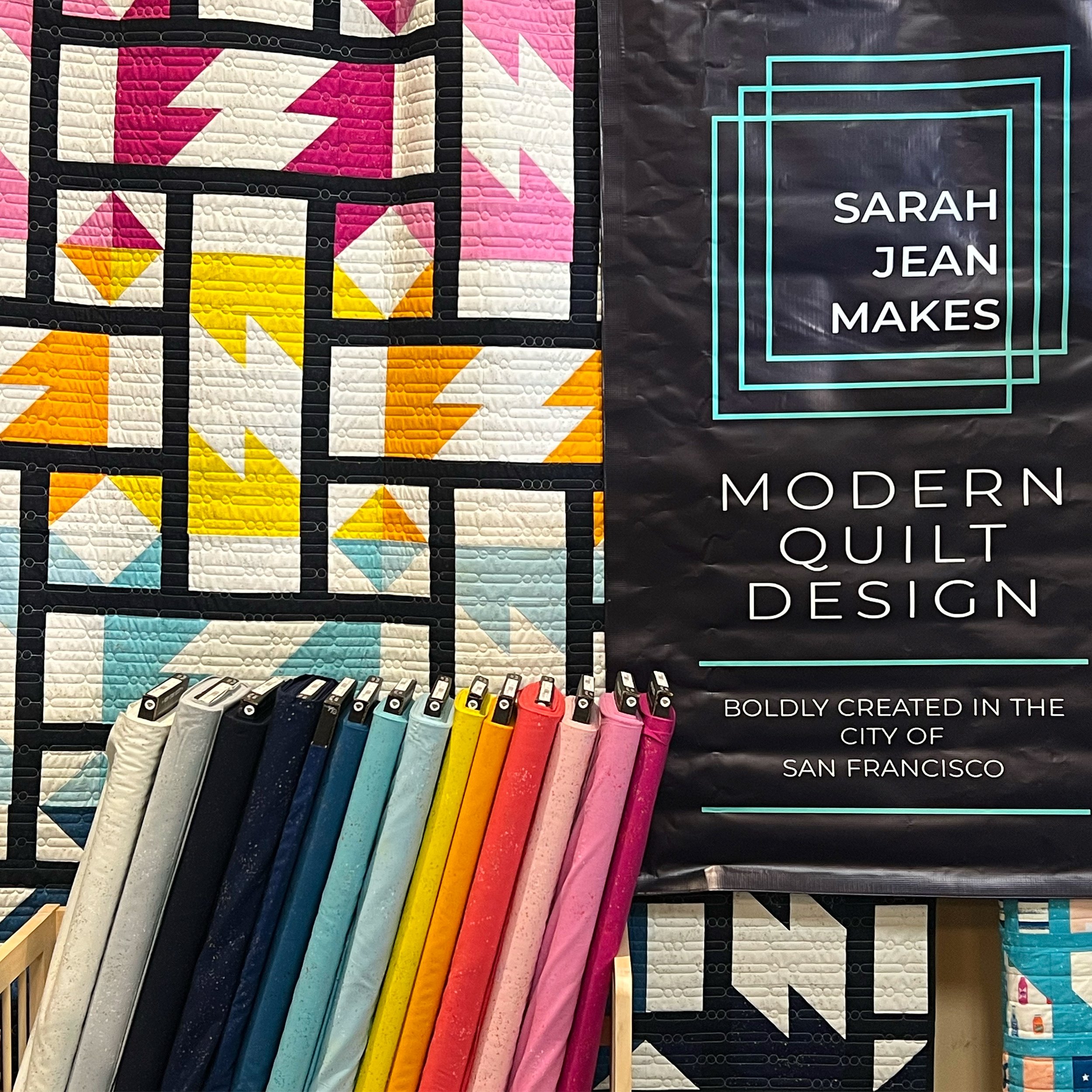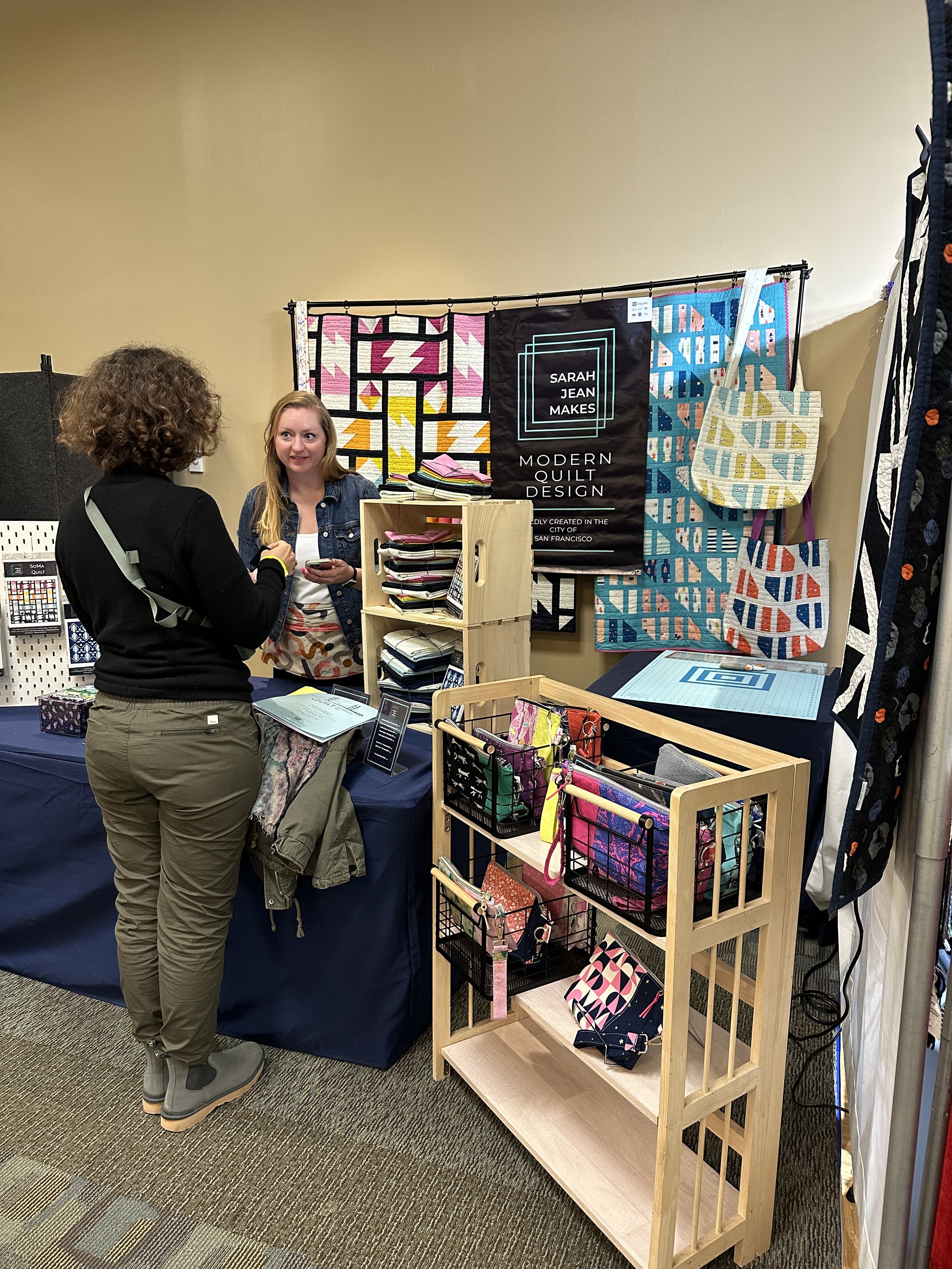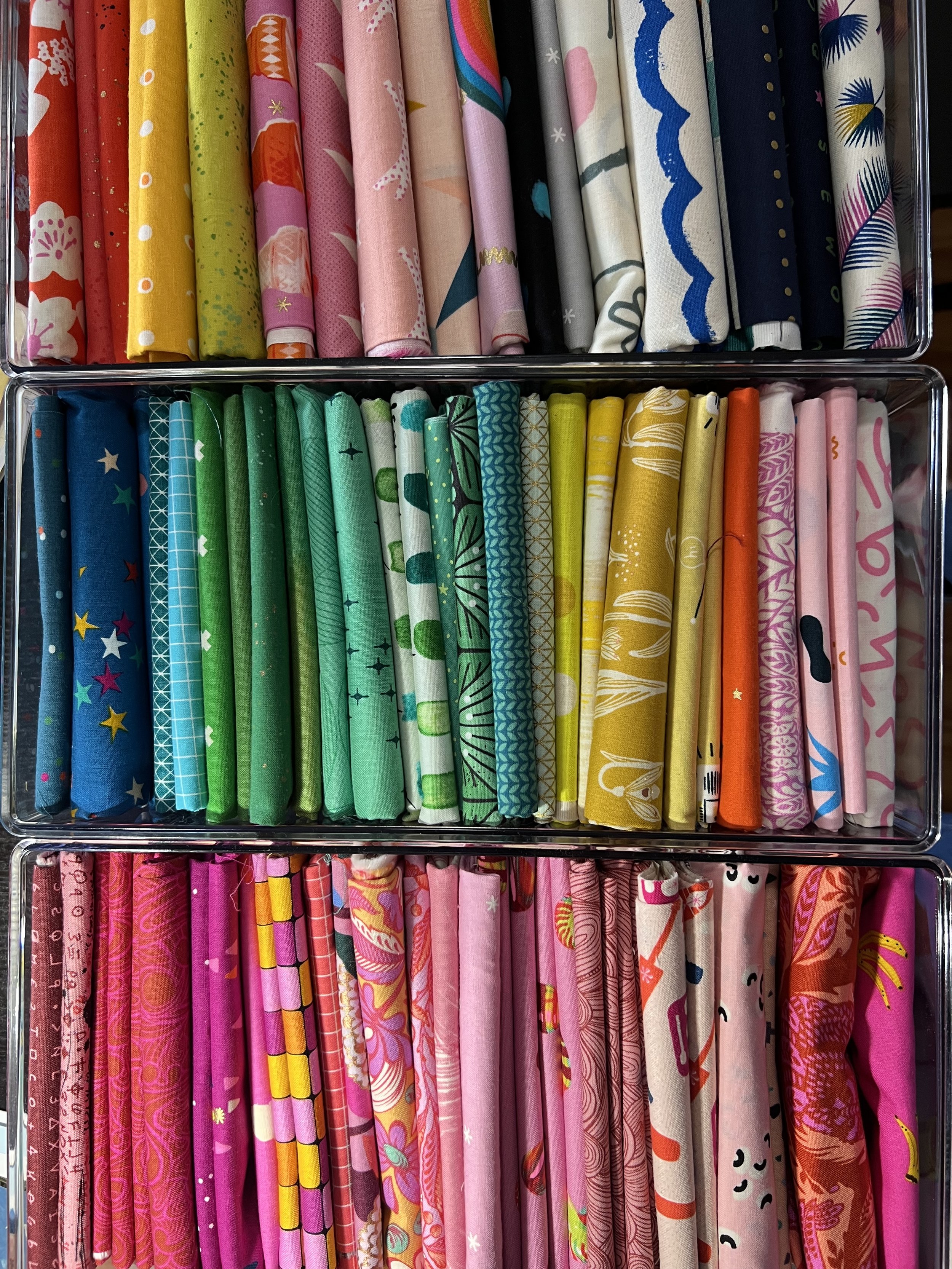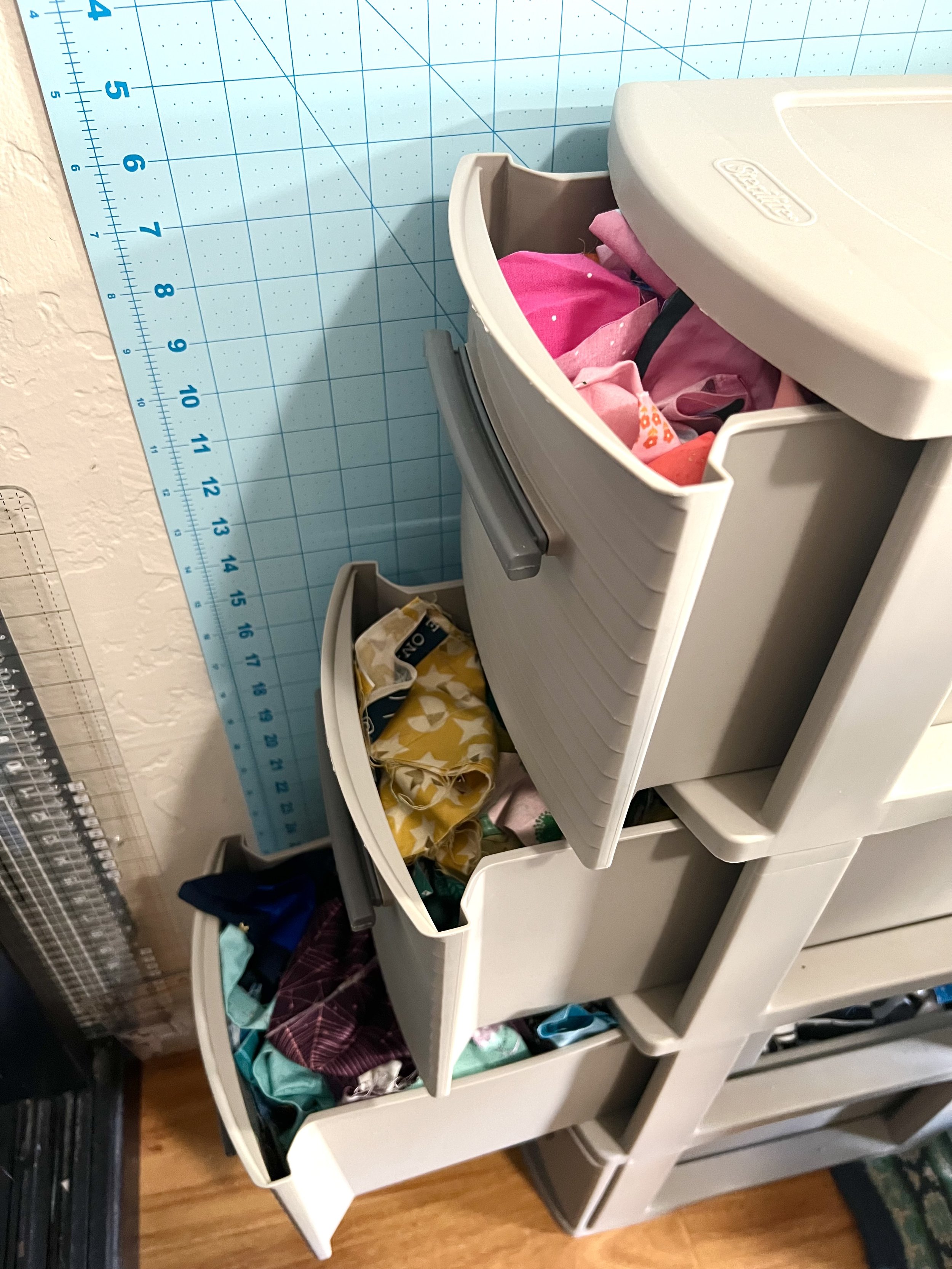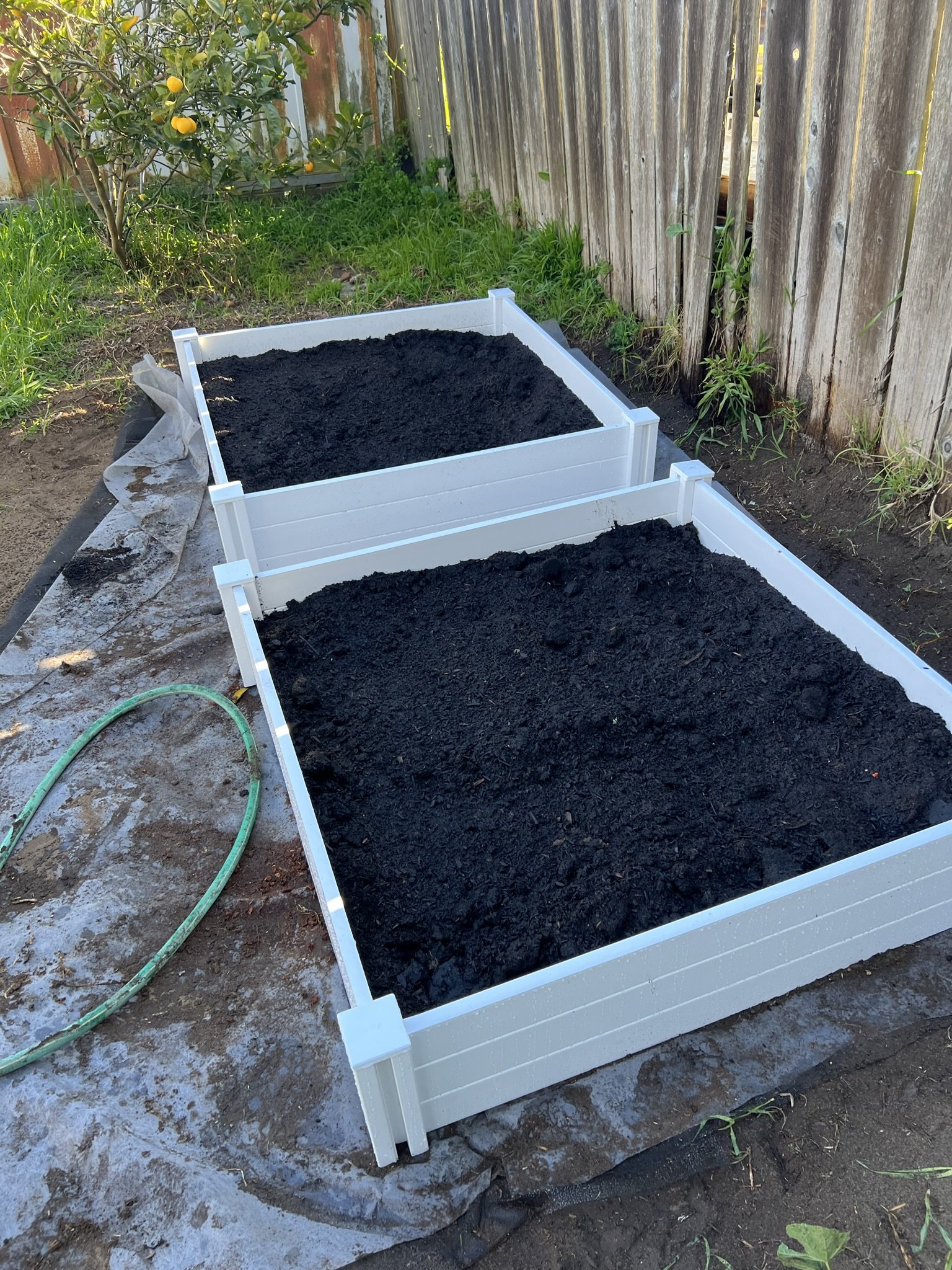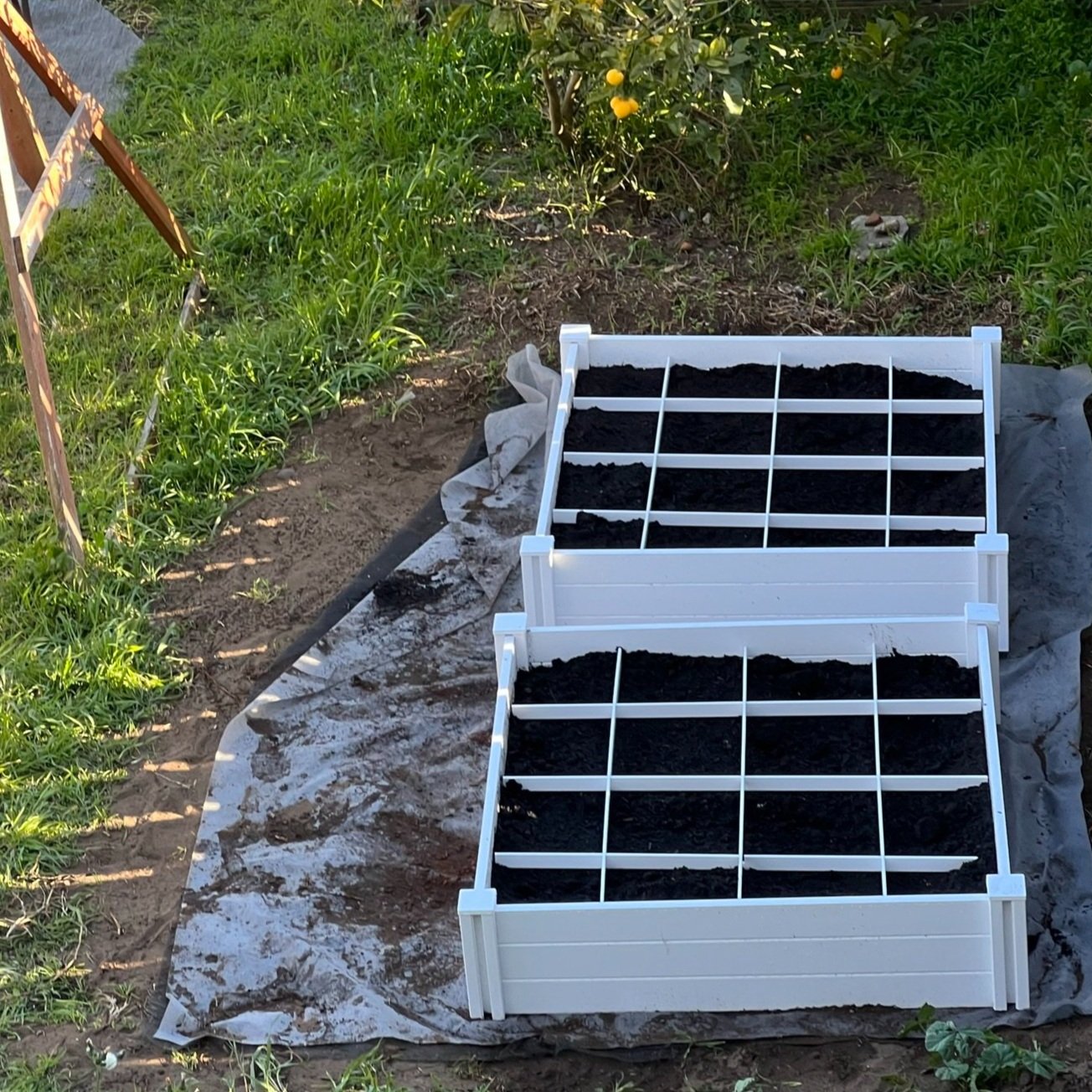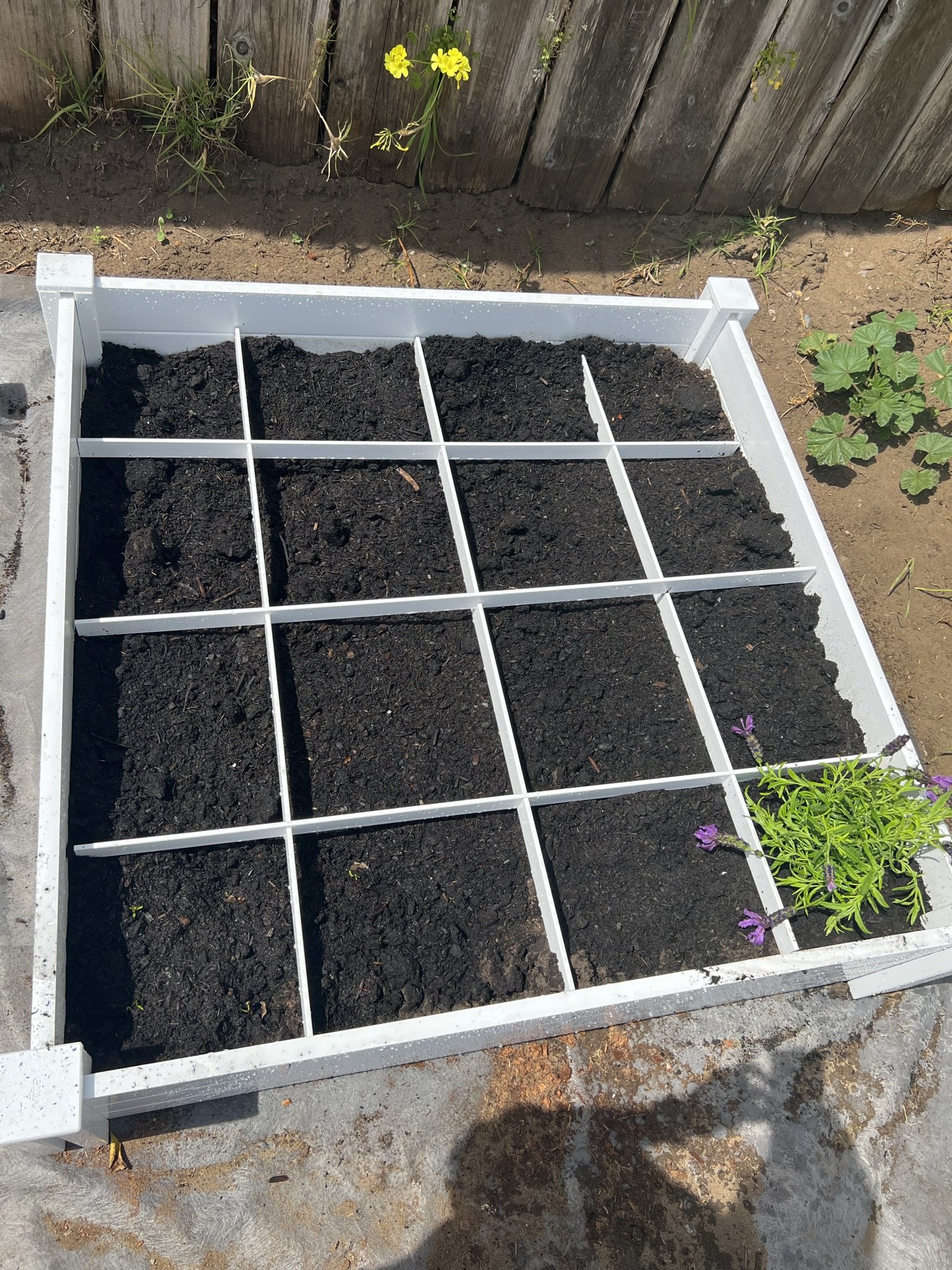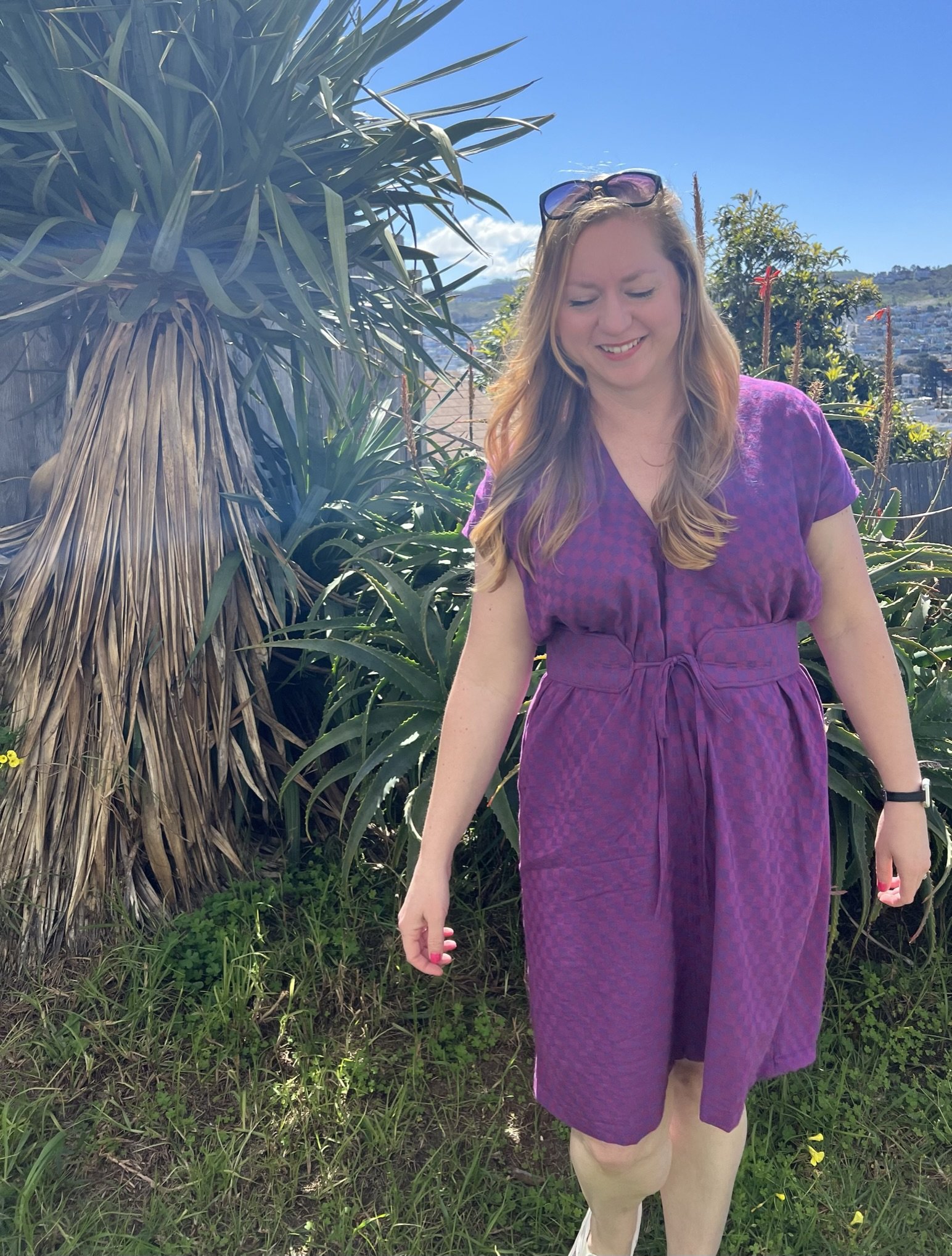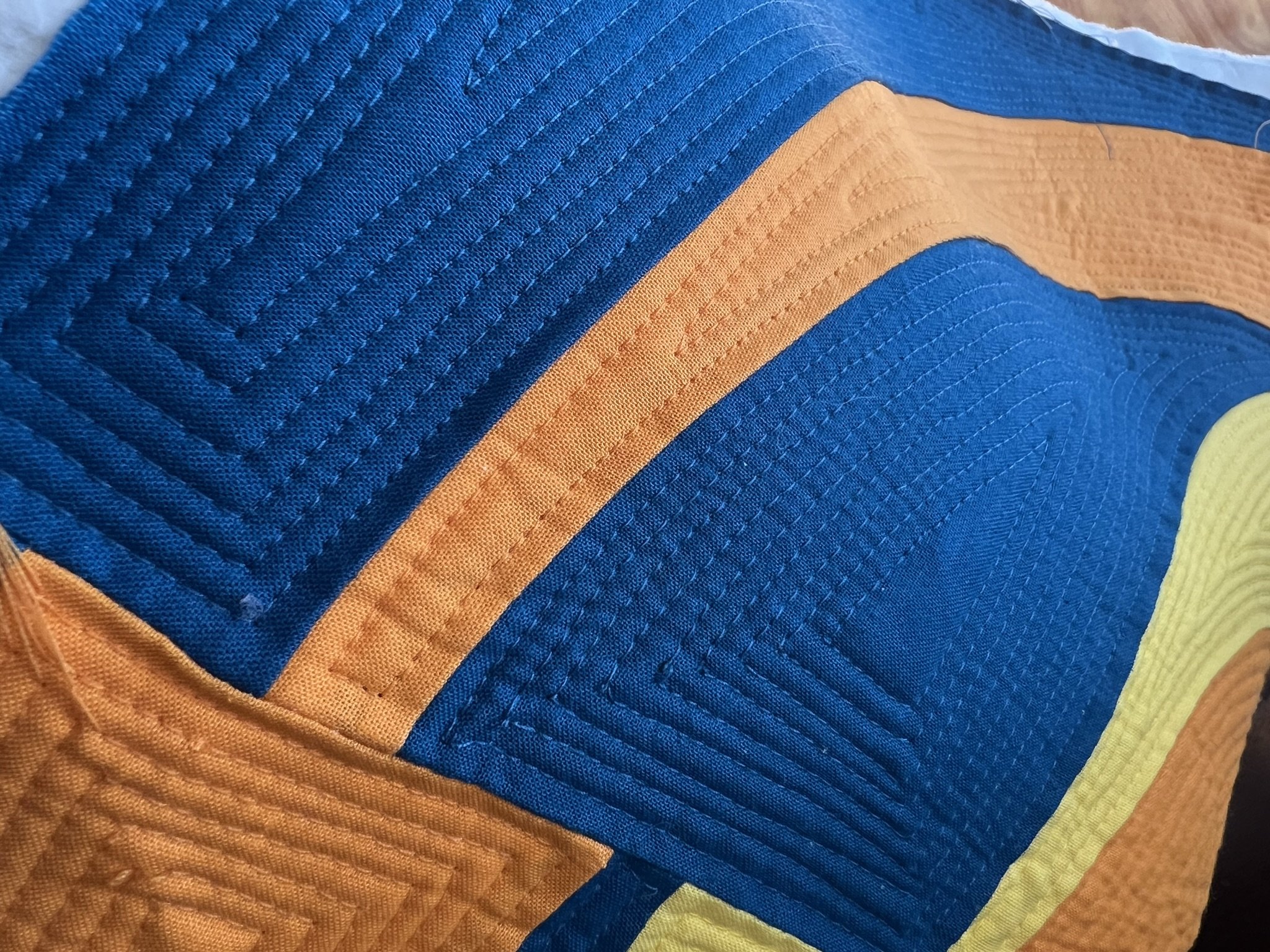Creative Rest
A creative’s guide to prioritizing rest to avoid burnout.
My creative medium of choice is quilt design. I dabble in small batch handmade goods, but design is where my passion lies. I feel grateful that I am able to spend time working creatively, as I am a Licensed Marriage and Family Therapist working for local behavioral health systems by day. However, juggling two jobs while being the primary caregiver for my kiddos has started to take a toll on me.
At the start of the year, I found myself dragging toward each project and event that I had planned for myself, losing momentum as each deadline approached. I finally decided to implement a planned rest period right after a two-day quilt show (QUILT San Francisco 2023) where I vended for the first time. The show was only one month after QuiltCon in Atlanta (which was another incredibly inspiring / exhausting experience). As soon as I landed from Atlanta, I went straight to work in prepping inventory and my display for the QUILT San Francisco show. I had an absolute blast and got to meet so many amazing local people. However, I didn’t allow myself any time to relax, absorb what I experienced, and take intentional next steps.
I hit a wall— HARD.
I gave myself the permission to push pause, as I felt depleted creatively, emotionally, socially, and physically. I knew I needed to implement some changes to help myself avoid a long-term creative shutdown. As I am starting to rise out of this rest period, I’d like to share with you the steps I took to help myself take an intentional creative break so that I could be better able to design and make things that felt authentic and easy.
Pictured above: Me with my Embarcadero Quilt hanging at QuiltCon; #SwearyMisfits L-R: Angie Reece, Jenny Sims, Martha Forman, Bailey Wilson Collins, Me, Anna MacClean, Kacey Crutchfield with our “Fuck You, In Pastels” challenge quilt hanging at QuiltCon (not pictured: Rachel Kaegi, Danielle Dugan, Stephanie Williams, and Michonne Dietrich); Close up of the SoMa Quilt inside my booth at QUILT San Francisco; Action shot of me working my booth at the QUILT San Francisco.
1 - Just STOP.
There’s no one true sign that indicates you’re headed for burnout. For me, it starts to manifest as an itching feeling of avoidance, exhaustion, and restlessness that starts to accompany every new task that comes up. I get easily overwhelmed, easily flustered, and often feel like I want to quit. I start feeling like the efforts I make aren’t getting me anywhere and I start to question the quality of my work. When everything becomes too much, I knew it was time to stop. So I did.
No more designing, no more showing up on social media, no more sample making, nothing. I had to fully stop what I was doing and allow myself time away. I removed the expectations to be productive creatively. I felt such immense pressure to create good, quality work, but it wasn’t coming. So I stopped trying. I walked away from my design software, put away my drawing pad, and opted to not think of abstract ways I could make new quilt designs. This was hard to do mentally for me, as my mind likes to wander to quilt design, but I had to intervene with myself and halt all quilty-content thought to really disengage.
The next step I did was completely stop the self-imposed requirement to show up on social media. I was in a rhythm of posting every other day to help connect with others and share what I was working on. However, after the shows, I felt like I had nothing new to share. Content creation is a job all by itself, and I just couldn’t conjure one more * new * project to perfectly stage and share with you all. So I stated I was taking a break and kept to it. It felt incredibly liberating to not be searching constantly for social media content. I could step back, allow myself the grace of being able to regather my thoughts so that when I was able to return I would have something meaningful to say.
Another component of pulling away from social media was to stop myself from over-consuming too much of the same thing. I follow a LOT of amazing quilt artists and designers and I see the trends of what design elements are popular. I find that I start to emulate what I see despite my best intentions to create things that feel new and fresh. Stepping away from the social media immersion has helped to clear my mind and allow for more organic design inspiration, rather than an amalgamation of everything I’ve been consuming.
2. Clean Your Space.
After working for so long making things for shows and creating new designs, my space became littered with scraps, half finished sample blocks, and stores of finished project’s remnants tucked away. It was a MESS. I don’t have a dedicated sewing space in my home, all of my work is done on my dining table. So often, at the end of the day, I shove projects into stackable project boxes and put them up. My fabrics get put in the cabinet and notions and threads in a drawer. Needless to say that while everything has a place to be, it doesn’t always get put back in the right spot. Fabrics were spilling out of my cabinets, unsorted scraps falling on the floor, and template cuts just scattered everywhere. I had to make some choices and clean things up! Here’s the method that I worked through to clean out my tiny space:
Take it all out, determine what is useful moving forward. I took a good hard look at the fabric and supplies I had and I sorted into “yes” and “no” piles. I put the “no” pile aside (see step 4) and began organizing the “yes.”
Implement new organization systems. I recently started to carry my patterns in print, which means I have a large inventory that needs a place to be. I bought new bins for my patterns that can hold them all upright and is easily accessible to pull for orders. I wrapped my fabric yardage around comic book boards, grouped together my 1/2 yard cuts and folded them together, and folded my Fat Quarters /Quarter Yard cuts and put them in respective bins as well. Anything that did not fit a standard size cut (including those wonky remnant pieces from backing cut offs), went into my scrap bin. See below for more information on my scrap bin method!
Clean out old project boxes. I have about 10 scrapbook boxes that I use as project boxes. This really helps me to stay organized if I’m working through multiple projects at once. However, once the project is complete, the box tends to carry all of the leftovers from the project. I sorted through old project boxes and put everything in it’s home in my cabinet. Now I have a couple empty boxes that are ready for new projects!
Destash what not longer feels like “me.” It can be REALLY hard to let go of fabric and supplies. Each piece added to a quilter’s fabric collection feels very personal and special. Unfortunately, the culture of collecting the pretty fabrics only to never use them has become too much the norm. I am already working with limited space, so I just don’t have the ability to hold on to more than what I can reasonably use. There are so many ways to off load supplies to others, such as donating to a local guild or school, donating to a second-hand supplies shop (www.scrap-sf.org is my local favorite!), or local Buy Nothing Facebook groups. If you’re hoping to make a little cash off of your supplies, I’ve had success with Facebook Buy/Sell/Trade groups and Instagram destashes. Feel Good Fibers is also a company that helps to resell quality fabric (not a paid endorsement, I actually have never used them, but have heard good things from friends!).
Scrap Management
I use this sorted drawer to hold all of my scraps that do not fit within my standard cuts in the cupboard. Anything smaller than a Fat Quarter or irregular in cut (e.g., backing remnant cut offs) goes straight into the color drawer. I’ve found sorting by color helps me to keep things organized and easily accessible for projects. This came in especially handy when I was participating in a quilt bee!
3. Switch It Up.
While I took my intentional rest, I chose to fill my time with other projects outside of my standard quilting. This helped me to get out of my standard rhythm of making and explore things that I usually don’t allot time for. In this case, it was attending to my yard.
I was able to spend some time in my very overgrown backyard and get my small raised bed garden plots assembled. I bought the beds a while ago and my spouse and I cleared space in our yard to put them. With the constant rain we’ve been having here in San Francisco, we haven’t had much of a chance to really get them ready to plant. We spent my birthday buying supplies and soil and I got out of the house, into the yard, and finally put it all together. Being out of my small space at home and into the fresh air felt really great. I intend on planting a vegetable garden year round which makes me very excited! I’ve been able to plant a few seedlings of red cabbage and spinach, along with my lavender plants. I plan on adding in carrots, peppers, and onions, too!
So if you are planning a rest period outside of your normal creative passion, try something completely different! Move from dormant to physical, indoor to outdoor, and engage your different senses!
4. Try New Skills.
As I started to feel ready to reapproach my sewing machine, I was aching for a fast finish (in comparison to an entire quilt!), and I wanted to try my hand at sewing something for myself. I was very inspired by my bee-mate friends (see photo at the top for the coolest humans around) who have successfully made some amazing garments. I felt brave and ordered this beautiful woven fabric by Giucy Giuce and snagged a very beginner friendly pattern by Cris Wood Sews: The Envelope Dress. I liked that it was strictly rectangles - a very easy transition for this quilter. I definitely have a lot of room for improvement, but I’m pleased how it came together! Finishing seams without a serger is going to be something I need to work on and I’m feeling confident to try another garment in the future!
Another project I dove into right before I went to QuiltCon was learning how to English Paper Piece (EPP). I hand sewed a little as a young girl, but haven’t really since. My dear friend Justine of Great Heron Thread Co sent me a beginner’s EPP kit and I was instantly hooked. I used these 1 inch hexagons with a Ruby Star Society Elixir charm pack and it’s been a really nice change of pace. I enjoy working on it in little bits here and there, with no real plan other than to make sure no two of the same colors are side-by-side. I liken it to how knitter’s just keep knitting and end up with a mile long scarf… I just keep adding on without direction! It might turn into a pillow for my couch some day, but right now, I’m just enjoying the process over the pressure of production.
5. Return to Creative Mode.
It is hard to say when the right time to return to creating is again. I’d liken it to a gut feeling over something that we can quantify. For me, I’m finding that I am having new ideas for quilt designs popping into my head and I actually feel energized by them. They aren’t feeling laborious, so I know I’m on my way toward a better creative state. Check in with yourself and see what is feeling hard and difficult versus what is feeling energizing and motivating. Don’t set expectations for yourself, allow it to flow when it comes. Creativity is something that cannot be forced, because the struggle will be reflected in what you create.
So what’s next for Sarah Jean Makes? I’d love to share with you!
I’ve been able to find some quilty inspiration and I think I’ve settled on two or three new designs to help round out the year for me! I’m not quite in a place where I can share them yet, but I’m working on building them out with all the fun quilt math and may start to make a sample soon.
I’ve also been wrapping up a small project that will be coming in June, so stay tuned to see more about that!
I’m hoping to share more of my behind the scenes processes and write up some blog posts akin to this to help those in the community who are going through the same things I am. It is nice to know that we aren’t alone in these very human experiences.
